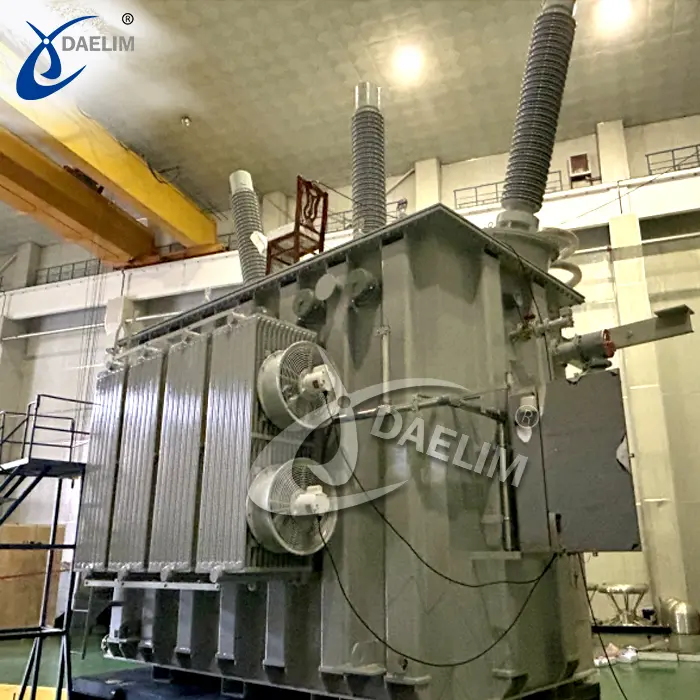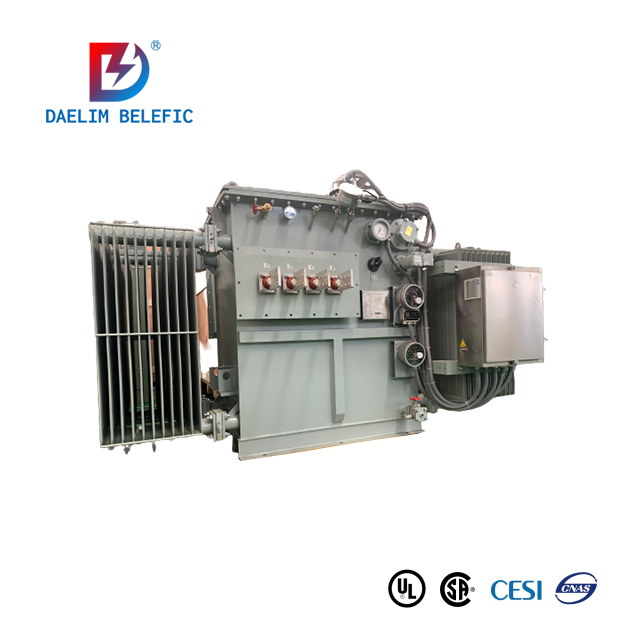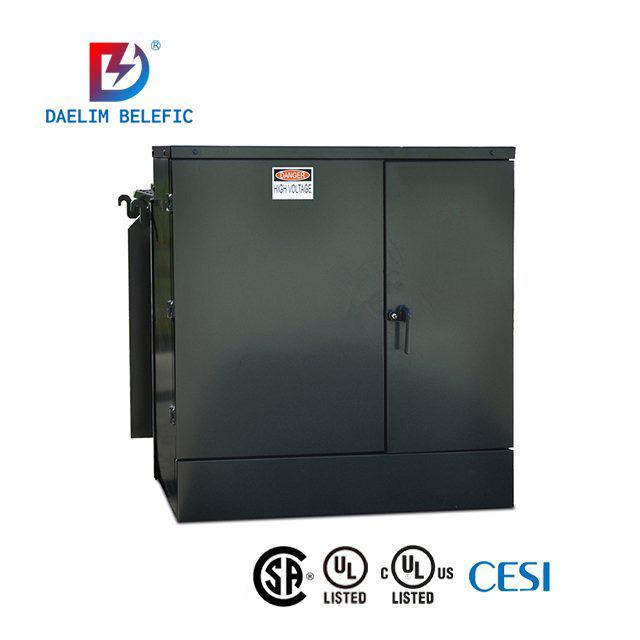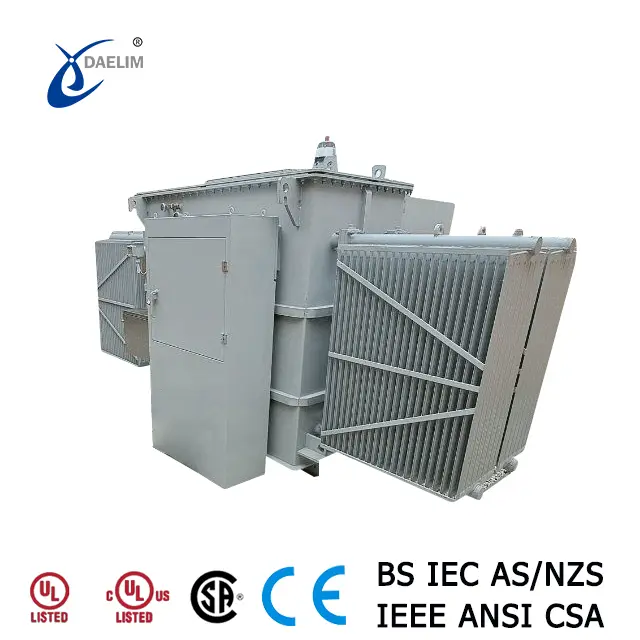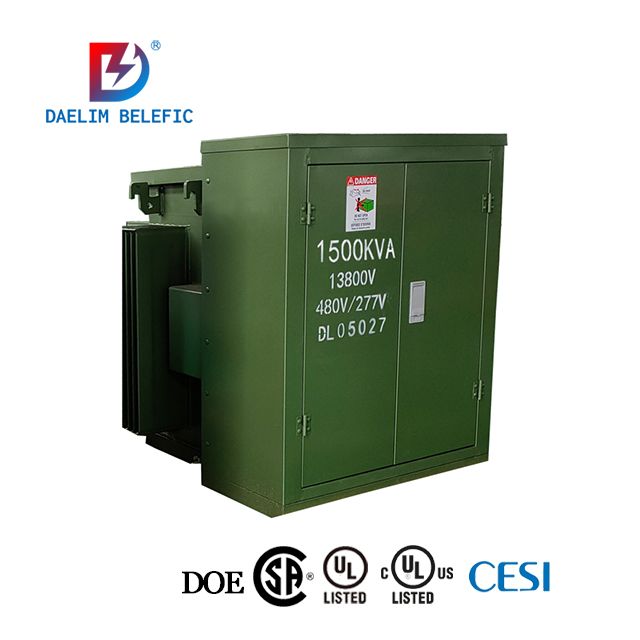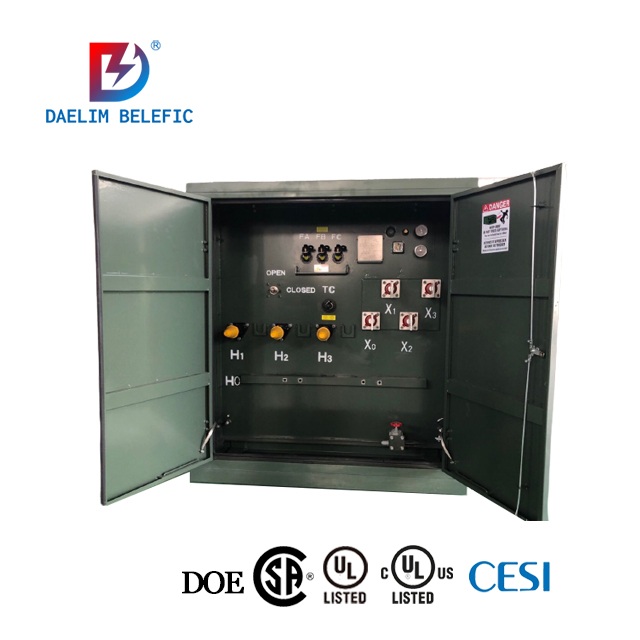Transformer Neutral Protection Knowledge Guide
Some transformer neutral points are directly grounded, and some transformer neutral points are grounded through gaps. The protection of transformer neutral points mainly reflects grounding faults.

Case 1: When a ground fault occurs in the system, the neutral point grounded transformer should be equipped with zero-sequence current protection, which can be composed of two sections, each with two-time limits. Narrow down the scope of influence of the fault, and act to disconnect the circuit breakers on all sides of the transformer for a long time.
Case 2: When a ground fault occurs in the system, after the transformer whose neutral point is grounded trips, the zero-sequence voltage of the grid rises or the resonance overvoltage will endanger the neutral point insulation of the transformer whose neutral point is not grounded. Therefore, the transformer whose neutral point is not grounded should be equipped with zero-sequence voltage protection or gap zero-sequence current protection.
Daelim is a factory that specialized in designing and manufacturing transformers. The neutral point of the transformer is grounded. Oil type transformers are also equipped with various protection devices, such as relays, moisture absorbers, pressure release devices, temperature measuring devices, etc., to ensure that your transformer can operate safely and efficiently.
| Content |
What are the protection used for the transformer?
1. Gas protection
Gas protection devices can be used to protect against internal faults in transformers. When a fault occurs inside the transformer, the oil is decomposed by heat to generate gas or when the oil level of the transformer decreases, the gas protection should act.
Oil-type transformers with a capacity of 800kVA and above and transformers in workshops with a capacity of 400kVA and above should generally be equipped with gas protection. Among them, the light gas action is for the warning signal, and the heavy gas action is for tripping the circuit breakers on the power supply side.
2. Longitudinal differential protection
The longitudinal differential protection device can be used to prevent the internal fault of the transformer and the fault of the lead-out bushing.
The transformer with a capacity of 10,000kva or above and the transformers with a capacity of 6,300kv·a and above running in parallel shall be equipped with longitudinal differential protection. When the sensitivity of current quick-break protection does not meet the requirements, longitudinal differential protection can also be installed.
Read more:10.5MVA-13.8/2.4kV Substation Transformer
3. Current quick-break protection
The current quick-break protection can be used to protect against internal faults of the transformer and faults of the lead-out bushings.
For transformers whose capacity is below 10000kVA and transformers whose capacity is below 6300kVA running in parallel, current quick-break protection is generally installed to replace longitudinal differential protection. For transformers with a capacity of more than 2000kVA, when the sensitivity does not meet the requirements, longitudinal differential protection should be installed instead.
Learn more: Key Considerations for a 2 MVA Transformer
4. Over current protection
Overcurrent protection can be used to protect against internal and external faults in the transformer. As the backup protection of longitudinal differential protection or current quick-break protection, the overcurrent protection with a time limit acts on tripping the circuit breakers on the power supply side
5. Overload protection
Overload protection is used to protect the transformer from overcurrent caused by overload. The protection device is only connected to a certain phase of the circuit, generally delaying action on the signal, it can also delay the trip, or delay automatic load shedding (unattended substation).
6. Single-phase grounding protection
For the low-voltage side of the neutral point directly grounded system (three-phase four-wire system), when the protection sensitivity of the high-voltage side does not meet the requirements, special zero-sequence current protection is installed.
What happens if transformer neutral is not grounded?
Electrical engineering specifications require that the neutral wire of low-voltage power transformers must be reliably grounded (except in mines). Because when there is a phase deviation, if the neutral line is not grounded, the phenomenon of "neutral point drift" will appear, that is, the neutral line is charged, and sometimes the voltage will be very high, which will cause electric shock hazards. Secondly, if the neutral line is not grounded, there will be some problems such as harmonic interference. So the neutral wire of the transformer must be grounded.
Classified Insulation Transformer

Large-scale transformers are the core equipment of power production. Due to their high cost, transformers with graded insulation are mostly used in power grids where the neutral point of 110 kV and above is directly grounded.
In actual operation, the neutral point of some transformers is directly grounded. But there are still some transformers whose neutral point is not grounded. The so-called graded insulation is the main insulation of the transformer coil near the neutral point, and its insulation level is lower than that of the coil end.
Learn more: Electrical Transformer Protection Knowledge Guide
Problems that should be paid attention to in the operation of graded insulation transformers:
1. The neutral point of the graded insulation transformer must be equipped with a lightning arrester and a gap to prevent overvoltage;
2. If the conditions permit and the operation mode permits, the graded insulation transformer must be grounded at the neutral point;
3. If the neutral point of the graded insulation transformer is not grounded, the neutral point overvoltage protection must be reliably put into operation.
Key Principles of Transformer Neutral Point Configuration
1. When the double busbar is running, it should be considered that after the bus tie breaker trips, it should be ensured that at least one transformer neutral point should be grounded in the two separated systems;
2. When there is power on the medium and low voltage sides of the transformer, the neutral point of the transformer must be directly grounded to prevent the circuit breaker on the high voltage side from tripping and the transformer becomes a neutral point insulation system;
3. The neutral point of the main transformer of the generator-transformer-line group should be kept grounded.
Three forms of transformer neutral point overvoltage
- Atmospheric overvoltage
- Overvoltage caused by single-phase ground fault
- Overvoltage caused by non-full-phase opening and closing of circuit breakers (mainly manifested as non-synchronized reclosing, non-full-phase action, wire disconnection, etc. of circuit breakers in the power grid)
Read more: Substation Transformer Ultimate Guide
Three ways of transformer neutral point gap protection

1. Atmospheric overvoltage
2. Overvoltage caused by single-phase ground fault
3. Overvoltage caused by non-full-phase opening and closing of circuit breakers (mainly manifested as non-synchronized reclosing, non-full-phase action, wire disconnection, etc. of circuit breakers in the power grid)

Transformer neutral point gap overcurrent protection
In order to prevent overvoltage from damaging the insulation of the neutral point of the transformer, measures are generally taken to install a discharge gap at the neutral point of the main transformer, and use the neutral point bushing current transformer or install an independent current transformer in the discharge gap loop. Form zero-sequence overcurrent protection of transformer neutral point discharge gap (referred to as "gap overcurrent" protection)
The principle of transformer neutral point gap protection is shown in the figure below.
When should the neutral point discharge gap protection on the high voltage side of the transformer be put into operation, when should it exist, and why?
It should be withdrawn before the neutral point grounding switch is closed, and put in after the neutral point grounding switch is opened. (that is, the discharge gap protection and the neutral point cannot be put into the state at the same time)
Get it now: Pad Mounted Transformer
Because: the discharge gap protection is composed of zero-sequence voltage and zero-sequence current in parallel, and the current setting is relatively sensitive, the time is short, and there is no relationship with other protections. In the state of direct grounding, if an external fault is encountered, zero-sequence current flows in the neutral point CT, which will cause the gap overcurrent protection to malfunction.
In the state of grounding through the gap, when a ground fault occurs, after other grounding changes are tripped, the neutral point zero-sequence voltage will increase, so that the gap zero-sequence voltage protection will act. After the gap breaks down, the zero-sequence current acts to protect the safety of the ungrounded transformer.
Three wiring methods for transformer neutral point gap overcurrent protection:
(1)Common current transformer wiring
The operating values of the two current relays are different, and the properties of the two ground currents are different. Zero-sequence overcurrent is mainly power frequency.
The gap overcurrent has the properties of gap and segmental development, and the intermittent time and current amplitude are random and contain a large number of harmonic components.
Try for free: Comprehensive Guide to 1000kVA Transformers
(2)The current transformers are wired independently of each other
The two sets of protection current transformers are independent of each other, that is, the AC circuits are separated and connected to their respective correct positions. This plan is more reasonable, but the cost is high.
(3)Comprehensive wiring diagram

The transformer is equipped with the neutral point CT of the main transformer when it leaves the factory. In order to reduce the cost, the zero-sequence overcurrent adopts the neutral point CT of the main transformer, and the gap overcurrent adopts the integrated wiring of a separate CT.
Read more: How Much You Know To Purchase The 12.5 MVA Transformer
Transformer zero-sequence voltage protection
The neutral point discharge gap is a relatively rough device because the discharge voltage is affected by the weather conditions, the adjustment accuracy, and the number of consecutive discharges, which may cause the action to fail. For this reason, zero-sequence voltage protection should also be installed as backup protection when the discharge gap refuses to move.
If you have any transformer problems, you can contact Daelim, who can provide you with technical parameters, transformer drawings, and price plans.
Related Products
Related Article
Electrical Transformer Protection Knowledge Guide
Electrical Transformer Protection Knowledge Guide, Transformers are very important equipment in the power system, so it is critical to ensure the normal and safe operation of transformers.
Transformer Overcurrent Protection
A transformer is vital in power distribution and industry but vulnerable to overcurrent faults from overloads, short circuits, or system issues. Such conditions can damage components, shorten lifespan, and cause financial losses. Hence, overcurrent protection is not optional but essential to ensure reliability, safety, and cost efficiency in transformer operations.
How to analysis of gases and check oil level in transformer ?
The gas produced by transformer oil and fiber insulation in operation is mostly dissolved in the oil, but the rate of gas production is quite slow. When there is an initial fault inside the transformer or a new fault condition is formed, the gas production rate and gas production volume are very obvious. Therefore, a proper analysis of the gas produced by the transformer can detect the transformer fault.
Unbalanced Current in the Differential Protection Circuit of UHV Transformers
Unbalanced current in UHV transformers' differential protection circuits can arise from inconsistencies in CT ratios, CT transmission errors, excitation surge currents, and transformer voltage regulation. These issues can affect the reliability of differential protection systems. Measures to mitigate unbalanced currents include using balancing coils and software adjustments, electronic and photoelectric transformers, methods to suppress and identify excitation surge currents, and compensating for voltage regulation effects. Implementing these strategies enhances the reliability and stability of UHV transformer protection systems.
Protection and Maintenance Methods for Oil Transformers
Prevent oil transformers from moisture and leakage, regularly monitor oil levels and temperature, ensure proper installation, and timely oil changes and drying. Pay special attention to storage time, sealing, and maintenance to ensure normal operation and insulation performance.
Temperature Protection and Maintenance for Transformers
Transformers require precise temperature protection, monitoring insulation grades, and appropriate oil types. Dry-type transformers trip at 130°C, oil-immersed at 90°C. In cold climates, FR3 fluid is recommended for its effective performance at -50°C.



